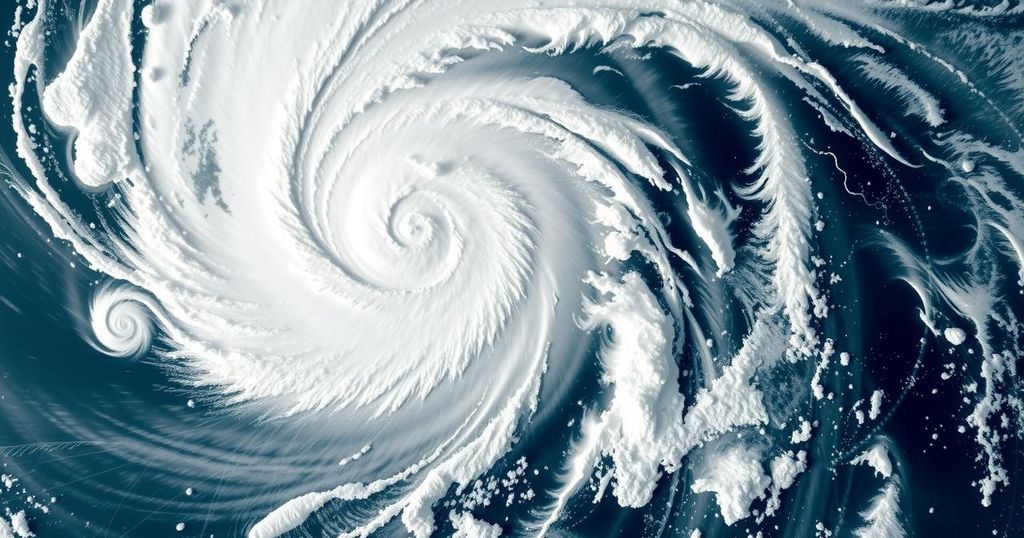Unveiling Climate History Through Sediment Analysis
Sediments function as historical time capsules, elucidating past climate changes and their impacts on landscapes. Sediment coring enables scientists to analyze layers and microfossils such as pollen and diatoms, revealing climatic variations. Additionally, sediment studies highlight events like tsunamis and volcanic eruptions, offering foresights into how climate change may increase the frequency of natural disasters in the future.
Sediments serve as vital historical records, offering insights into how ancient climate changes shaped our environments. Scientists employ sediment coring techniques across various ecosystems, including peat bogs, lakes, and deep oceans. This involves extracting samples from varying depths to analyze the sediment’s physical characteristics and the embedded microfossils—such as pollen and diatoms—which provide clues about past climatic conditions. Darker organic layers typically indicate wetter, warmer climates, while lighter layers reflect colder, drier conditions.
The role of microfossils cannot be overstated. Pollen helps reconstruct plant histories, revealing shifts in vegetation during glacial periods when significant regions were under ice. Conversely, diatoms—photosynthetic algae—thrive in aquatic environments and serve as indicators of past ecological conditions through their specific habitat preferences. These microorganisms not only signify ancient climatic states but also hint at larger geological events, such as floods, hurricanes, and volcanic eruptions.
Recent extreme weather anomalies underscore the importance of such analyses. For instance, sediment studies along Scotland’s coasts uncovered evidence of a tsunami approximately 8,150 years ago, triggered by a landslide in the Norwegian Sea. Diatom analysis corroborated this finding, presenting distinct assemblages indicative of abrupt climatic shifts, particularly the 8.2 ka event, which may have instigated greater instability along coastlines, raising concerns in the context of contemporary climate change.
Further exemplifying this relationship, historical volcanic events reveal a narrative interwoven with climatic conditions. Analysis of deposits from Mount Mazama highlights the environmental ramifications of its eruption 7,600 years ago, with ash layers reaching considerable distances. Researchers suggest a correlation between periods of significant volcanic activity in the mid-Holocene and climatic warming attributed to glacial melting, thereby accentuating an intricate interplay between climate and geology that demands careful consideration as we anticipate future environmental challenges.
In summary, the study of sediment layers unravels complex interactions between climate, landscape evolution, and geological disturbances. By deciphering these archives, scientists are not only reconstructing past climates but are also providing critical insights into how climate change may influence future natural disasters, emphasizing the urgent need for understanding our planet’s historical context as we navigate impending environmental shifts.
The study of sediments is profound in the context of understanding Earth’s climatic history and geological events. Sediments, which accumulate over time, contain layers reflective of various environmental conditions, enabling scientists to reconstruct past climates and landscapes. By utilizing sediment cores from diverse ecological settings, researchers can uncover records of plant histories through pollen and diatom analyses, shedding light on climatic variations over millennia. These insights reveal not only historical climate patterns but also the potential for natural disasters associated with significant geological events, driven by climate change.
In conclusion, sediment analysis reveals invaluable information about past climate changes and their impacts on landscapes. By investigating microfossils such as pollen and diatoms within sediment cores, researchers elucidate shifts in climatic conditions that have shaped our environment. Moreover, sediments not only provide context for historical geological events, such as tsunamis and volcanic eruptions, but they also signal the potentially escalating hazards posed by ongoing climate change, underscoring the necessity for continued research in this critical field.
Original Source: theconversation.com




Post Comment